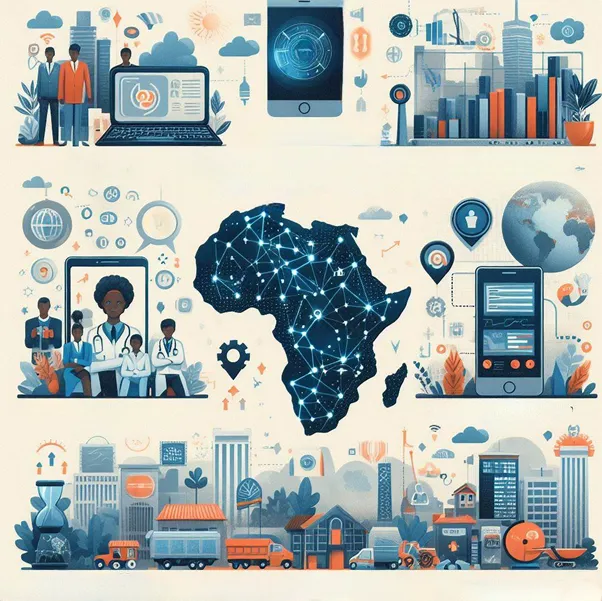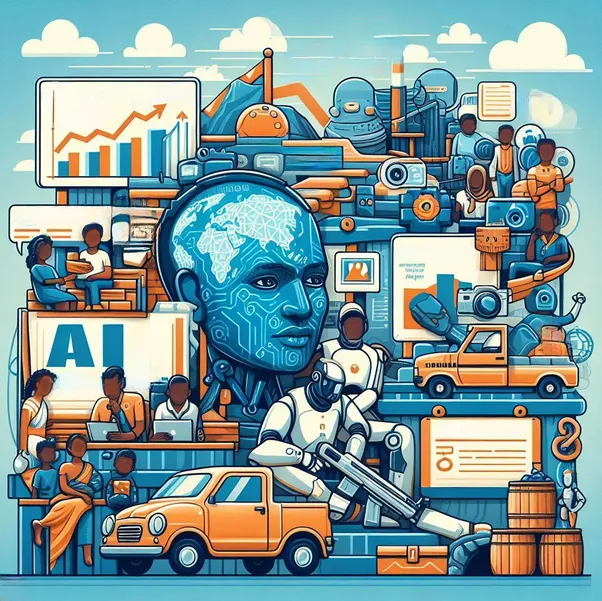Introduction
The evolution of Artificial Intelligence (AI) has been rapidly taking place, positioning it as one of the most transformative technologies in today”s world. Its potential to make a positive impact on billions of lives spans various sectors such as driving economic growth, healthcare advancements, and agricultural productivity enhancement. Nonetheless, despite the immense opportunities AI offers, the focus of cutting-edge development and deployment predominantly remains in data-rich, tech-savvy environments found in advanced economies.
Developing nations, unfortunately, continue to significantly lag behind in harnessing the potential of AI deployment.
Bridging this widening “AI divide” will be crucial for low and middle-income nations to fully participate in the AI revolution and harness it to meet critical sustainable development needs. While they may be late entrants, developing countries can potentially leapfrog by using AI more broadly to solve challenges in inclusive growth, quality public service delivery, and upward economic mobility for their young populations. But this requires surmounting the considerable barriers around data, infrastructure, skills, funding, and responsible governance.
With strategic investments, international cooperation, and locally attuned policies around capability-building, data systems, and ethical AI governance – the developing world can drive path-breaking innovations using AI. This holds the key to converging with advanced economies and ensuring the benefits of the AI transformation reach the billions living in poverty.
The UN also identified AI as a critical piece of the puzzle for developing nations to meet the ambitious Sustainable Development Goals (SDG) by 2030 across health, education, reducing inequalities, and building resilient societies. This article discusses the potential but also risks around AI in the developing world and offers policy strategies centered on investments, partnerships, and governance that can equip countries to harness AI equitably and ethically to foster sustainable development.
The Importance and Potential of AI in Developing Nations

Some of the predictions state that AI can potentially make developing countries’ GDP growth rate be 1.2% higher per year. Areas where AI can have an impact include healthcare, education, smart cities, financial inclusion, and agriculture among others. For instance, AI diagnostic tools can assist in providing better healthcare access and quality in areas far away from doctors.
AI tutoring apps can help fill gaps in education through personalized, adaptive scale learning. These use cases are seen by developing nations as they utilize AI in government services, collaborate with global tech companies on pilot programs, and even start their local startups. With the proper strategies, policies, and investments, developing countries can utilize AI to promote sustainable and inclusive growth.
The Challenges and Barriers for AI Deployment in Developing Nations
However, developing countries have substantial hurdles to AI adoption and implementation compared to developed economies. Some key challenges include:
Limited AI expertise and lack of technical skills
Developing world also suffers a deep shortage of researchers, developers and engineers with knowledge in AI. Time must be taken to build homegrown talent through education reforms.
Data deficiencies
For AI systems to function smoothly, they require huge quantities of quality and relevant data. However, most of the developing countries do not have adequate data infrastructure and capacities to collect sufficient data.

Inadequate digital infrastructure
This is because using AI requires basic connectivity, communication networks , cloud and edge computing facilities – areas where developing countries lag.
Difficulty accessing the latest AI
Many developing nations often cannot afford or access the latest AI technologies designed by a few technology bigwigs as a result of cost and IP considerations. This creates a dependence risk.
Insufficient risk governance
As AI becomes increasingly deeply embedded in developing countries’ systems, likely, that they do not have regulatory frameworks to govern the risks associated with biases errors, and misuse of AI.
Societal mistrust and lack of public acceptance
The roadblocks to adoption may come from citizens fearing or hesitating over the makeup of the AI technologies that they do not fully understand.
The Strategies and Solutions for AI Deployment in Developing Nations
To successfully harness AI’s potential, Deployment in Developing Nations should pursue multifaceted strategies centered on investing in inclusive capacity building, data and digital infrastructure, public-private partnerships, and responsible technology governance.

- Prioritise investments in STEM education and technical skills development relevant to AI across academia and industry: Governments should fund scholarships and open access programs at scale focused on both foundational and advanced skills – data analytics, machine learning, deep learning, neural networks -that serve as a building block for indigenous AI expertise. Academic institutions need adequate resources to set up dedicated AI research labs and course offerings.
- Policy incentives to encourage private sector investments in skills and HR development around AI: Tax benefits, co-funding support for enterprises setting up internal training programs, and hiring from underrepresented communities can help catalyze local workforce development.
- Partnerships with global AI leaders and cross-border capability building: Developing countries should proactively leverage corporate training pipelines, academic exchanges, and technical support programs specifically customized from leading AI powerhouses like US, UK, Europe, Japan, Singapore and others to accelerate learning. Regional cooperation models around AI skills should also be explored.
- National data governance frameworks aligned to security and privacy: As a foundational data layer, legislation defining access, licensing, privacy protections including for vulnerable groups along with cybersecurity infrastructure is vital to engender public trust and enable data sharing between public/private players for AI Deployment in Developing Nations. Open government data portals, removing restrictive data localization laws, and securing sensitive citizen data in cloud infrastructure can accelerate innovation.
- Invest in connectivity and communication infrastructure: Government programs around improving digital infrastructure – high-speed mobile/Wi-Fi networks, data centers, IoT ecosystems, and cloud infrastructure should incorporate AI-readiness as a key benchmark given the computationally intensive requirements to run modern algorithms optimally. This should involve both urban and rural infrastructure.
- Promote private sector and start-up-led AI innovation hubs: Policy incentives via R&D subsidies, and tax credits, easing regulatory burdens for AI research entities coupled with seed funding access through VC partnerships, and business incubators can drive greater bottom-up innovation tailored for local contexts.
- Multi-stakeholder models for sectoral AI Deployment in Developing Nations: Governments should foster open ecosystems bringing together startups, large enterprises, and civil society around priority use cases in sectors like healthcare, agriculture, and smart cities for collaborative creation of shareable data repositories, testing sandboxes and scaling solutions nationally through joint ownership.
- AI safety and ethics boards for responsible governance: Regulatory bodies should govern AI systems development and deployment via frameworks defining controls around transparency, privacy preservation, preventing embedded societal biases, continuous risk monitoring mechanisms, and maintenance of human oversight through the machine learning lifecycle. Accountability and recourse pathways for individuals impacted by errors in complex AI algorithms also need institutionalization.

While countries craft localised roadmaps leveraging the above strategies, the scale of modern-day AI also necessitates models of international cooperation appropriate for developing country contexts. Collaboration not competition has to underpin capacity-building initiatives around data infrastructure, knowledge transfers, localized innovation ecosystems, regulatory systems, and responsible AI adoption pathways for the Global South.
Conclusion
AI adoption across the Deployment in Developing Nations world holds tremendous potential but continues facing complex adoption gaps compared to advanced economies. However, the strategies centered on capability enhancement, data systems, digital infrastructure improvements, and responsible technology governance proposed here can equip countries to surmount barriers around skills, access, security and bridge these gaps over time. The returns for citizen well-being and prosperity goals can be substantial if harnessed right.
With foresight and planning, developing nations can also avoid some pitfalls of untamed AI disruption visible across wealthier countries today through an emphasis on transparent, ethical standards early on. Continued political will, investments in national priorities, and participative decision-making around AI policymaking remain vital as countries unlock AI for meeting global development goals in the 21st-century knowledge economy.
With emerging models of South-South cooperation and deeper public-private partnerships, AI can drive sustainable, inclusive growth trajectories for low and middle-income countries faster than timelines followed by today’s wealthy nations historically. Overall, while formidable obstacles exist presently, the developing world is well-positioned to craft a pioneering roadmap around AI adoption that unlocks economic convergence, catalyzes entrepreneurship for shared prosperity across societies, and helps billions of citizens transition into an increasingly digital future global economy over the coming decade.



